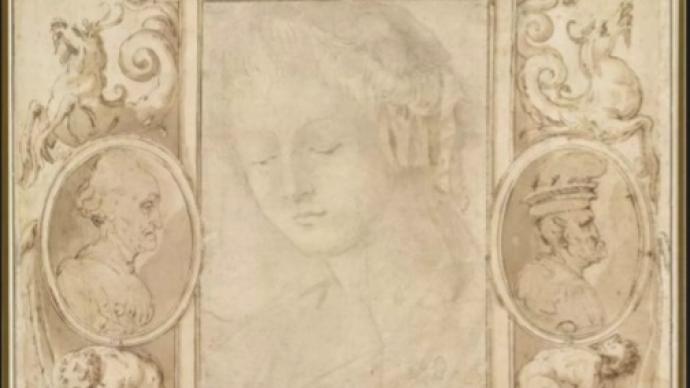
Michelangelo's friend and Renaissance art theorist, Giorgio Vasari, compiled the first atlas of drawings based on historical logic, Libro de 'disegni (picture books), this atlas It was widely mentioned in the second edition of the 1568 edition of "Biography of Yiyuan Famous People" (originally titled "The Lives of the Best Painters, Sculptors and Architects") as a means of identifying the artist's style.
On June 29, 1574, two days after Vasari's death, the atlas of drawings was handed over to Grand Duke Francisco I of Tuscany, and is believed to contain some 526 paintings. After that, the album mysteriously disappeared.
Recently, "George Vasari, the legend of the sketchbook" was held at the Louvre in France. The opening of the exhibition wrote: "Then the sketchbook disappeared..."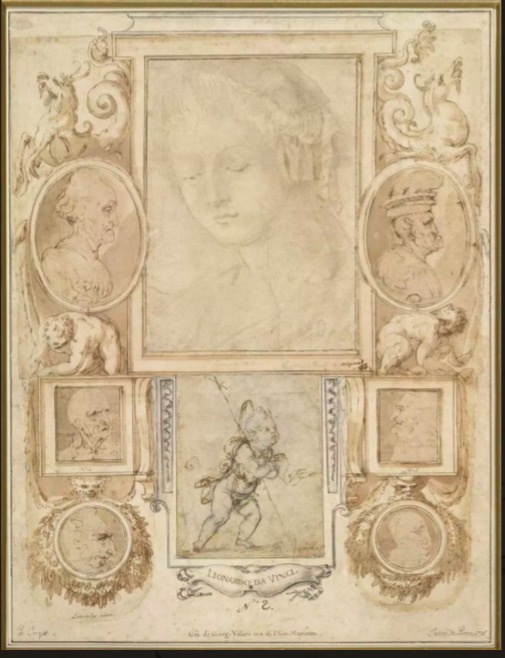
Why are "Sketch Books" scattered all over the place? In fact, after Vasari's death, this "Sketch Atlas" mysteriously disappeared, which is also the beginning of the Louvre exhibition. "Then the Atlas of Drawings disappeared..." reads the first line of text on the exhibition wall. "It did not appear in the Florentine storeroom, and was not even talked about for a time." However, by the 1630s, some of the works were Reborn in England.
The great collectors and connoisseurs of the 17th and 18th centuries dreamed of seeing and owning the works in this "art bible". The most famous of these was Pierre-Jean Mariette (1694-1774), who believed that Vasari's atlases of drawings inspired a tradition in which each work was accompanied by some type of decorate. To indicate the legendary collection that once belonged to Vasari.
In 1950, two scholars, Arthur Popham and Philip Pouncey, noticed the mysterious sign on the drawings, and the Louvre exhibition focuses on this phenomenon more than half a century ago. Discovery brings follow-up.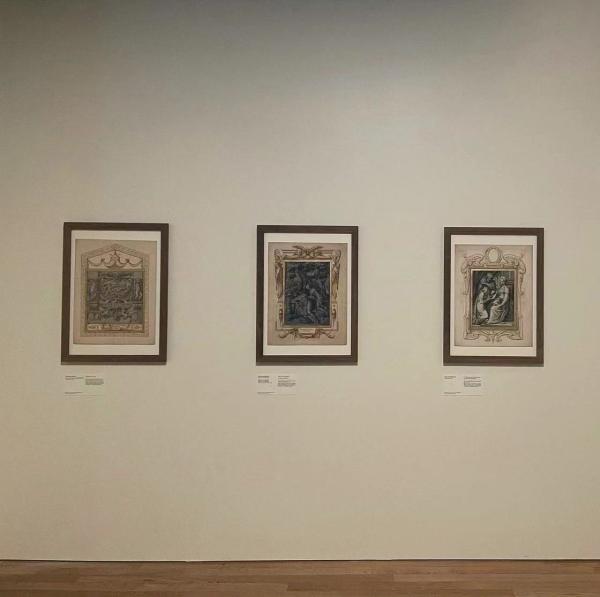
Vasari was born in an ordinary family in Arezzo, Tuscany. In his early years, he was recommended by his cousin Luca Signorelli and studied under the stained glass painter Guglielmo Damasilia. Came to Florence at the age of 16 to join the circle of Andrea del Salto and his pupils Rosso Fiorentino and Pontomo, where he was educated in the humanities. He befriended Michelangelo and was influenced by his style of painting. In 1529 he visited Rome to study the works of Raphael and other Roman artists of the High Renaissance. He served the Medici family for life.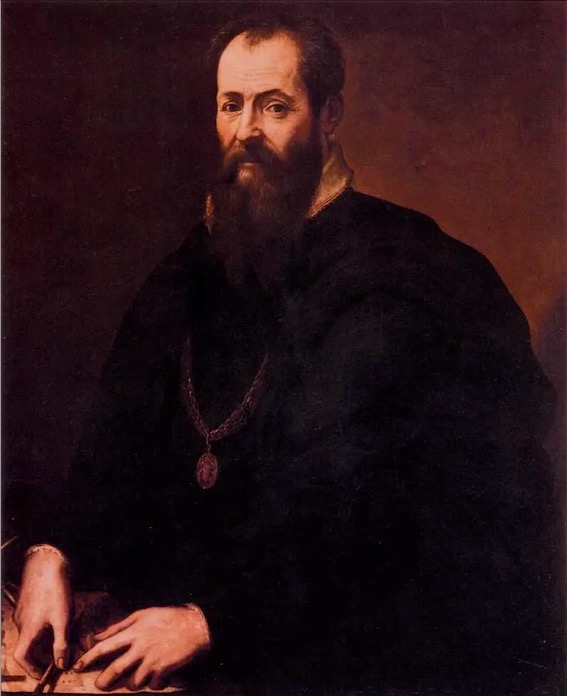
In addition to being a painter, he was also a successful architect. The Uffizi Palace in Florence was designed by Vasari; he also designed the passage connecting the Uffizi Palace with the Palazzo Pitti on the other side of the Arno River, which is now known as the "Vassari Corridor" ".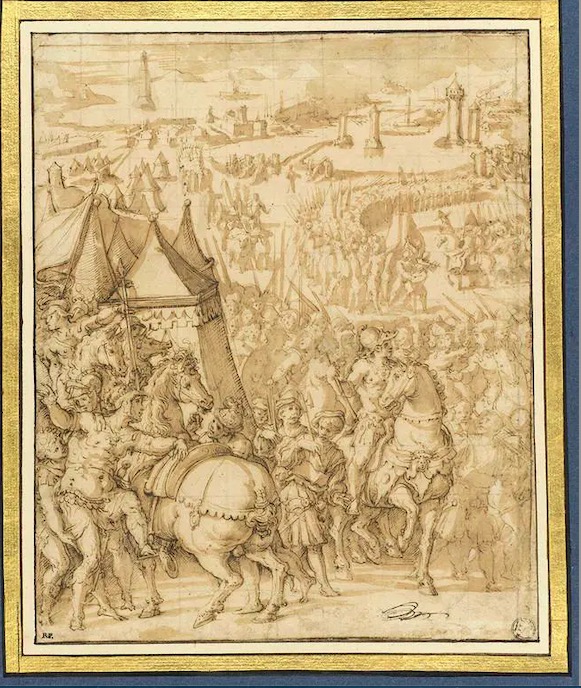
The Biography of Yiyuan Celebrities tells about the life of painters, sculptors and architects from the 13th century to the time he lived in. The people involved in the writing are all deceased except his friend Michelangelo. Vasari relied on bit-by-bit information research, what he saw and heard, and interviews with others to sort out clues to complete this magnificent work. Although some of its content proved inaccurate in later studies, it conveyed an astonishing amount of information in an age without photos and telephones.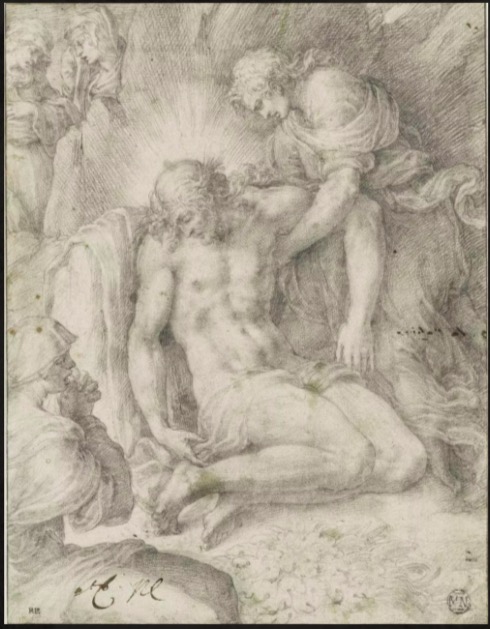
When I took on the task of writing about the lives of great artists...I did a sifting and analyzed the difference between "good", "better" and "perfect". I have carefully listed the skills, styles, characteristics of painters and sculptors. I also tried my best to reveal the causes and origins of different styles, as well as the ascending or descending curves of different eras and different artists.
There is no text to explain why Vasari collected and compiled an atlas of sketches, perhaps to illustrate the different styles of the listed artists, the earliest of which were by Cimabue (1240-1302) and the most recent from Vasari. Contemporaries of Surrey. In the 1550 and 1568 editions of "Famous People in Yiyuan", Vasari insisted on drawing as a basis to let the audience perceive the prosperity of that painting. He will also refer to the works of artists he owns, for example, in Botticelli's section, Vasari writes: "Botticelli's paintings are of a unique excellence; after his death, more and more people I am keen to collect his works, and my collection of Botticelli has also been carefully compared and judged."
Vasari was also one of the founders of the Academy of Art established by Cosimo I in Florence in 1563. They hoped to use the academy to elevate the status of the artist, and his painting collection became the teaching text of the art academy.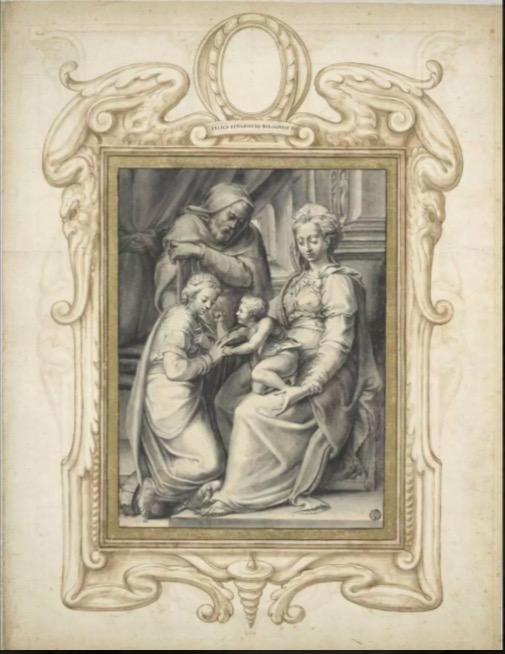
Vasari was also one of the first collectors to collect drawings, which he considered as an art form worth preserving and exhibiting. The Atlas of Sketches begins with drawings obtained by Vasari from the collection of the Florentine sculptor Lorenzo Ghiberti (1378-1455). Vasari enriched and expanded the collection, drawing on many volumes of blank volumes to paste into the pages drawings by artists including Cimabue and Michelangelo. He would make his own sketches on the margins of these genuine works. His sketches are inspired by these originals and pay homage to their style.
But after Vasari's death, the Atlas of Drawings disappeared, and some of it resurfaced in England in the 1630s. What happened in the half-century that disappeared?
So far, research by museums and collectors has stalled. There are also studies that believe that Vasari's "Atlas of Sketches" was originally collected by the Florentine collector Nicolò Gaddi (1537-1591), and on May 18, 1638, it was collected by the descendants of the Gaddi family. Sold, clutched several times, and now scattered in museums across Europe and the United States.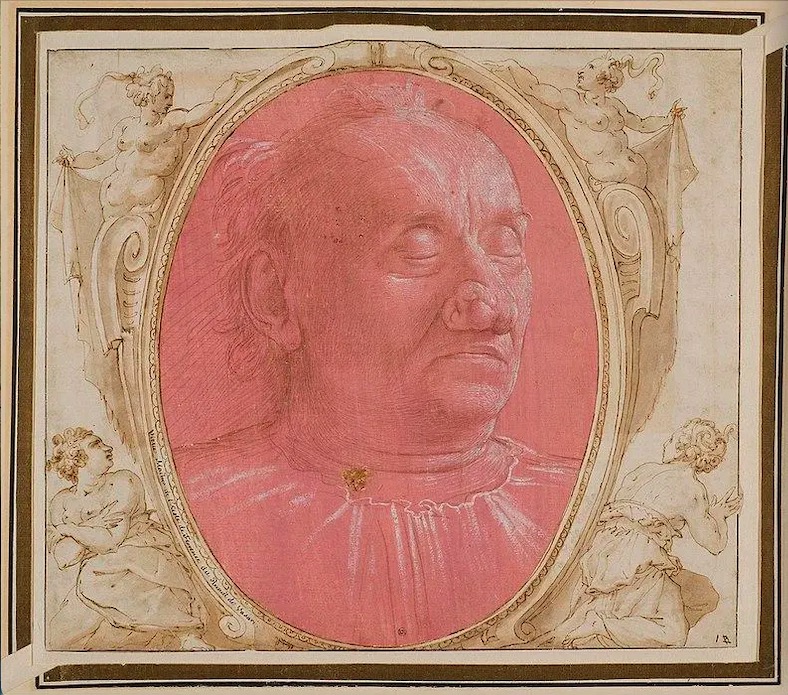
The exhibition suggests that some of these works may have come from Nicolò Gaddi's (1537-1591) imitation of Vasari's atlas of sketches. This guess comes from the 1950 discovery of drawings by British Arthur Popham and Philip Poncey in the British Museum. The image of a phoenix perched on a burning branch is thought to be very close to the Gaddi family crest.


On June 29, 1574, two days after Vasari's death, the atlas of drawings was handed over to Grand Duke Francisco I of Tuscany, and is believed to contain some 526 paintings. After that, the album mysteriously disappeared.
Recently, "George Vasari, the legend of the sketchbook" was held at the Louvre in France. The opening of the exhibition wrote: "Then the sketchbook disappeared..."

For Leonardo da Vinci, The Childhood Study of St. John the Baptist
It is reported that the exhibition is jointly organized by the Louvre Museum and the Swedish National Museum. Currently, there are 162 drawings in the "Drawing Atlas" in the Louvre Museum and 83 in the Swedish National Museum. There are also some works from the "Sketch Atlas" in the Uffizi Gallery in Italy, the British Museum, and the Albertina Gallery in Vienna.Why are "Sketch Books" scattered all over the place? In fact, after Vasari's death, this "Sketch Atlas" mysteriously disappeared, which is also the beginning of the Louvre exhibition. "Then the Atlas of Drawings disappeared..." reads the first line of text on the exhibition wall. "It did not appear in the Florentine storeroom, and was not even talked about for a time." However, by the 1630s, some of the works were Reborn in England.
The great collectors and connoisseurs of the 17th and 18th centuries dreamed of seeing and owning the works in this "art bible". The most famous of these was Pierre-Jean Mariette (1694-1774), who believed that Vasari's atlases of drawings inspired a tradition in which each work was accompanied by some type of decorate. To indicate the legendary collection that once belonged to Vasari.

Marco del Moro, Diana and Endymion
Vasari's atlas of sketches have been attracting the attention of scholars for centuries, but this is a Sisyphian task, since Vasari's atlas of drawings does not have a specific list of catalogues, So many studies just focus on the areas of appreciation, attribution, and reconstruction of museum collections.In 1950, two scholars, Arthur Popham and Philip Pouncey, noticed the mysterious sign on the drawings, and the Louvre exhibition focuses on this phenomenon more than half a century ago. Discovery brings follow-up.

exhibition site
Atlas of Vasari and SketchesVasari was born in an ordinary family in Arezzo, Tuscany. In his early years, he was recommended by his cousin Luca Signorelli and studied under the stained glass painter Guglielmo Damasilia. Came to Florence at the age of 16 to join the circle of Andrea del Salto and his pupils Rosso Fiorentino and Pontomo, where he was educated in the humanities. He befriended Michelangelo and was influenced by his style of painting. In 1529 he visited Rome to study the works of Raphael and other Roman artists of the High Renaissance. He served the Medici family for life.

Vasari
Vasari was first and foremost a painter. He admired Michelangelo, but pursued Mannerism. His artistic style was complicated, and there were many works in existence. The most important of these are the series of frescoes on the walls and ceiling of the Studiolo of Francesco I in the Palazzo Vecchio (City Hall) in Florence. However, his works are usually densely composed and the atmosphere is tense, which is more in line with the aesthetics of the people at that time.In addition to being a painter, he was also a successful architect. The Uffizi Palace in Florence was designed by Vasari; he also designed the passage connecting the Uffizi Palace with the Palazzo Pitti on the other side of the Arno River, which is now known as the "Vassari Corridor" ".

Vasari works
But his most influential works are at the level of art history. Biography of Yiyuan Celebrities is considered a pioneer in the publication of art historical works. In the book, the term "Renaissance" is used formally for the first time, and it is proposed that the stages of art development can be divided according to the 14th, 15th and 16th centuries, which has a great influence on subsequent art theoretical research.The Biography of Yiyuan Celebrities tells about the life of painters, sculptors and architects from the 13th century to the time he lived in. The people involved in the writing are all deceased except his friend Michelangelo. Vasari relied on bit-by-bit information research, what he saw and heard, and interviews with others to sort out clues to complete this magnificent work. Although some of its content proved inaccurate in later studies, it conveyed an astonishing amount of information in an age without photos and telephones.

Giulio Clovio, "The Dead Christ Raised by St. John"
As for the "Sketch Albums," some art historians believe that they were collected as a visual index of the artist's work in Vasari's Biography of Yiyuan Famous People, while others believe that it is a separate album in its own right. In the preface, Vasari describes his reasons for writing:When I took on the task of writing about the lives of great artists...I did a sifting and analyzed the difference between "good", "better" and "perfect". I have carefully listed the skills, styles, characteristics of painters and sculptors. I also tried my best to reveal the causes and origins of different styles, as well as the ascending or descending curves of different eras and different artists.
There is no text to explain why Vasari collected and compiled an atlas of sketches, perhaps to illustrate the different styles of the listed artists, the earliest of which were by Cimabue (1240-1302) and the most recent from Vasari. Contemporaries of Surrey. In the 1550 and 1568 editions of "Famous People in Yiyuan", Vasari insisted on drawing as a basis to let the audience perceive the prosperity of that painting. He will also refer to the works of artists he owns, for example, in Botticelli's section, Vasari writes: "Botticelli's paintings are of a unique excellence; after his death, more and more people I am keen to collect his works, and my collection of Botticelli has also been carefully compared and judged."
Vasari was also one of the founders of the Academy of Art established by Cosimo I in Florence in 1563. They hoped to use the academy to elevate the status of the artist, and his painting collection became the teaching text of the art academy.

Felice Pinariccio, The Wedding of St. Catherine
The Mystery of the SketchbookVasari was also one of the first collectors to collect drawings, which he considered as an art form worth preserving and exhibiting. The Atlas of Sketches begins with drawings obtained by Vasari from the collection of the Florentine sculptor Lorenzo Ghiberti (1378-1455). Vasari enriched and expanded the collection, drawing on many volumes of blank volumes to paste into the pages drawings by artists including Cimabue and Michelangelo. He would make his own sketches on the margins of these genuine works. His sketches are inspired by these originals and pay homage to their style.
But after Vasari's death, the Atlas of Drawings disappeared, and some of it resurfaced in England in the 1630s. What happened in the half-century that disappeared?
So far, research by museums and collectors has stalled. There are also studies that believe that Vasari's "Atlas of Sketches" was originally collected by the Florentine collector Nicolò Gaddi (1537-1591), and on May 18, 1638, it was collected by the descendants of the Gaddi family. Sold, clutched several times, and now scattered in museums across Europe and the United States.

Domenico Ghirlandaio, Portrait of an Old Man on a Pink Background, thought to be from Vasari's "Atlas of Sketches".
For this exhibition, 162 and 83 works from the collections of the Louvre and the Rijksmuseum have been reopened. Among them, the collection of the Louvre is mainly from the collection of the banker Jabach acquired by Louis XIV in 1671, the purchase of the auction in 1755 and the collection of Saint-Morys confiscated after the French Revolution in 1793. . The Rijksmuseum collection comes from the collections of Pierre Crozat and Carl Gustaf Tessin.The exhibition suggests that some of these works may have come from Nicolò Gaddi's (1537-1591) imitation of Vasari's atlas of sketches. This guess comes from the 1950 discovery of drawings by British Arthur Popham and Philip Poncey in the British Museum. The image of a phoenix perched on a burning branch is thought to be very close to the Gaddi family crest.

Typical Nicolo Gardi collection.
In the exhibition, if you look closely, the so-called "Atlas of Sketches" by Vasari are arranged in two ways. Some pages are ornately laid out, while others are very simple. From this, some scholars have judged that some of the hand-painted borders were written by Vasari or his assistants, which can correspond to the descriptions in "Biography of Celebrities in Yiyuan"; while some were from Gadi. But Gardi's partial collection of sketches is not inferior, including Filippino Lippi, Andrea del Sarto and Domenico Bay. Domenico Beccafumi et al.
Typical Nicolo Gardi collection.
In this exhibition Domenico Ghirlandaio (1449-1494) "Portrait of an Old Man on a Pink Background", Liberale da Verona (1445 - 1527/9) The exhibition of works such as "Studies on Nursing Women" and "The Resurrection of Christ" by Raffaellino del Garbo (1479-1527) makes the painting research on the book come alive, and the audience can also think about Vasari and Gardi The relevance of the collection, but the academic research on the sketchbook continues.
Exhibition works
Note: The exhibition will be on display until July 22, and will be moved to the National Museum of Sweden in 2023. Part of this article was compiled from the Louvre website.Related Posts